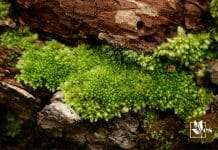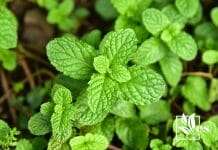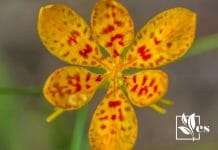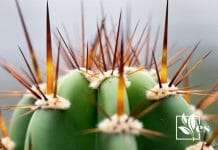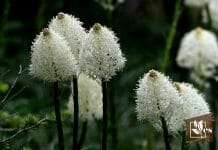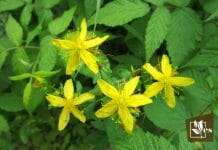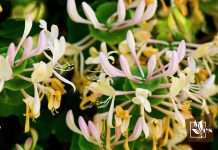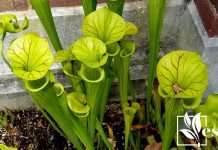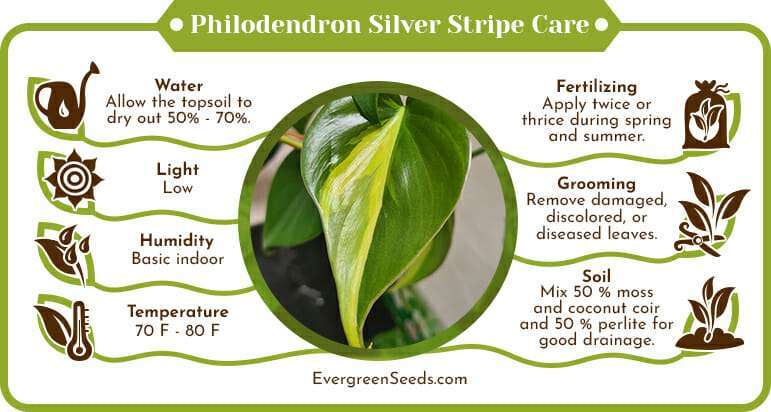 Philodendron silver stripe of the Araceae family is a creeper or trailing plant that is commonly called the Heartleaf philodendron or the Sweetheart vine. The name comes from its heart-shaped, lush foliage that is usually about three inches large with a pointy end.
Philodendron silver stripe of the Araceae family is a creeper or trailing plant that is commonly called the Heartleaf philodendron or the Sweetheart vine. The name comes from its heart-shaped, lush foliage that is usually about three inches large with a pointy end.
The elegant white stroke in the middle of the leaf gives it the name silver stripe. In this article, you’ll learn all about the proper care and propagation of this beautiful philodendron genus plant.
JUMP TO TOPIC
Quick Overview
Here is a handy table of this plant’s requirements.
| Requirements | Philodendron Silver Stripe |
| Light | Can tolerate low light conditions; will grow quicker and produce bigger leaves in bright indirect sunlight |
| Water | Allow the topsoil to dry out 50 to 70 percent before watering again |
| Soil | Needs soil that is well-draining, retains moisture and has rich organic matter |
| Temperature | Temperatures between 70 to 80 degrees Fahrenheit |
| Humidity | Stays happy in basic indoor humidity; higher humidity levels encourage more abundant foliage |
| Fertilizer | Apply a fertilizer twice or thrice during spring and summer; do not fertilize during winter |
What Is Philodendron Silver Stripe?
Philodendron Silver Stripe, also called Heartleaf philodendron or the Sweetheart vine, is a tropical creeper plant with heart-shaped, lush foliage that is usually about three inches large with a pointy end. This plant has a beautiful silver stripe in the middle of its leaves, which is where its name comes from.
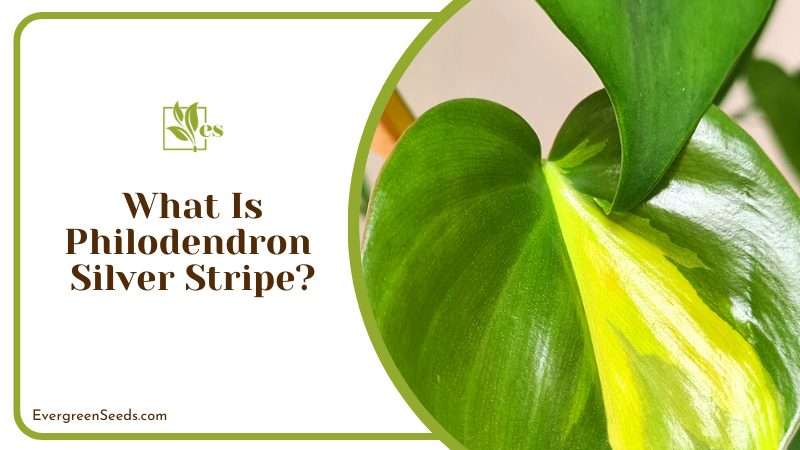
Climbing philodendrons are suitable for indoor gardens, while large-leaved non-climbers are useful for open spaces or capacious buildings. All philodendrons will need similar care and temperatures of above 55 degrees Fahrenheit to thrive.
Now let us take a look at what our Philodendron silver stripe needs.
The following care and troubleshooting guide will assist you in growing this beautiful plant.
Philodendron Silver Stripe Care
The Heartleaf philodendrons are among the most effortless tropical plants to grow indoors. They endure and forgive a little neglect like keeping them in low light, giving them poor soil, and slightly delayed watering. It can be a good plant for beginners or for people who do not have time to care for more meticulous plants.
The following section will focus on its light, water, soil and fertilizer requirements.
 Light
Light
The Philodendron silver stripe can tolerate low light conditions. It will grow quicker and produce bigger leaves in bright indirect sunlight. The variegation becomes more obvious in higher light, but do not put it in direct sunlight because the sun will burn its foliage.
The best place for the potted Philodendron silver stripe can be a sunny window that gets filtered light. Remember, it grows under trees in its natural environment and it is not designed to be under the full strength of the sun. On the other hand, very low light for prolonged periods can affect its growth too. It will not grow in darkness.
 Water
Water
This plant will grow best when you do not overwater it. There is a basic rule for watering Philodendron silver stripe: allow the topsoil to dry out 50 to 70 percent. Keep giving it water until you see water draining out from the bottom of the pot, and keep the pan under the pot dry at all times.
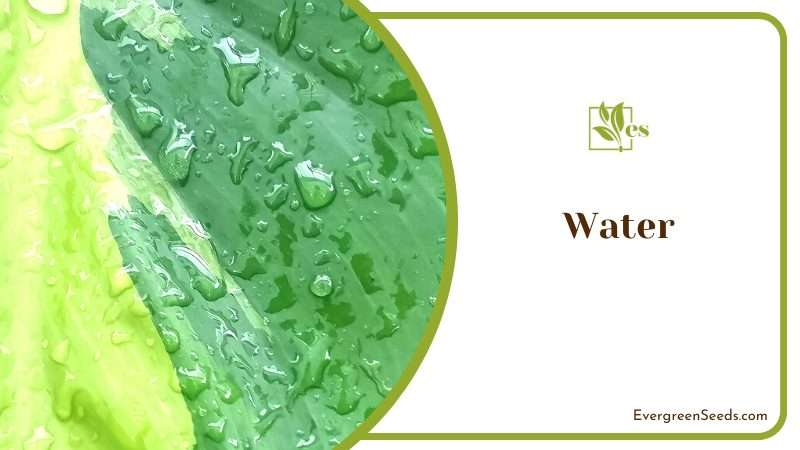
During winter, slow down with the watering as that is the time for the plant to rest. Be mindful of overwatering the plant. It can cause root decay and lead to the death of your Philodendron.
 Humidity
Humidity
The Philodendron silver stripe plant stays happy in basic indoor humidity, but higher humidity levels encourage more abundant foliage. Plants will like occasional misting too. Here are a few ways to increase humidity around your plants:
- Install a humidifier
- Use a mister
- Keep plants together
- Wash leaves occasionally
 Temperature
Temperature
Philodendron silver stripe is a tropical plant and likes to remain cozy. It grows well in temperatures between 70 to 80 degrees Fahrenheit. Take note that temperatures lower than 55 degrees Fahrenheit will affect its growth.
 Soil
Soil
Philodendron silver stripe is a hemiepiphyte, which are plant that can survive while living on the host tree. That is why it needs soil that is well-draining, retains moisture and has rich organic matter. You can get ready-made soil mix for pots or make your own mix.
Here is a recipe to try: Mix 50 percent moss and coconut coir and 50 percent perlite for good drainage. Choose a pot that has loads of drainage holes to assist in drainage.
 Fertilizer
Fertilizer
Philodendron silver stripe grows fast in warmer climates or temperatures. With the right amount of plant food, it will thrive beautifully. Follow these tips for best results:
- To increase Philodendron silver stripe growth rate, apply a fertilizer twice or thrice during spring and summer, which is the growing season of the plant
- Do not fertilize during winter
- Alternately, heavily dilute the feed to be used with each watering
Here are some natural fertilizers or plant food that you can use:
- Worm casting
- Fish emulsion
- Compost
- Manure
Worm castings are odorless but costly. Fish emulsions are smelly, but they lose their strong odor when diluted and are a highly beneficial fertilizer. Compost and manure can be quite strong, so please do not over-fertilize your plants.
Slow-release fertilizers allow the plants to gradually soak up the nutrients while simplifying things for you. Liquid fertilizers are mixed with water and used with each watering. The nutrients remain available for plants in a consistent amount throughout the growing season.
– Toxicity
Philodendron silver stripe leaves are toxic for pets and people. If ingested, one can suffer from the swelling of lips and mouth, upset stomach, nausea or vomiting.
 Pruning
Pruning
Philodendron silver stripe may need occasional pruning to remove damaged, discolored, or diseased leaves. Use sterilized scissors to avoid any infection.

You can also wash leaves occasionally to keep them clean.
– Potting
Philodendron silver stripe works well as a potted plant. Here are a few things to keep in mind when planning to pot your gorgeous plants:
- Choose a pot with several drainage holes, preferably a terracotta or ceramic pot
- Plastic pots can also help if your soil is well-draining
- Change the pot to a bigger size when the plant outgrows the old one
- Do transplants in the evening
Propagation
The best time to propagate the Philodendron silver stripe is early to late summer. Cuttings need warm conditions to grow roots. There are two ways to propagate Philodendron silver stripe plants.
- Air layering
- Stem cutting
We’ll be taking a look at each method in detail and giving you a simple step-by-step guide.
– Air Layering
The best way to propagate Philodendron silver stripe is through air layering. Here is an easy guide to follow if you want to utilize this method:
- Select a strong and healthy stem with more than two nodes.
- Place peat moss around a node and wrap it with plastic.
- Tie and secure the peat moss against the stem.
- Leave it there for a few weeks until you see roots forming inside the plastic wrap.
- Make a clean cut just below the wrap.
- You now have an individual plant that can grow on its own.
- Remove the plastic and plant the cutting in a potting mix suitable for it.
- Keep it protected for a few weeks until it gains strength.
– Stem Cuttings
There is another way of propagating the stems during summer. Stem cuttings can be taken and propagated through water propagation. For this method, you will need:
- A pair of sterilized scissors
- A few healthy branches with two nodes
- A jar or container filled with clean water
The steps that you need to follow are simple:
- Carefully take cuttings using sterilized scissors.
- Remove the bottom leaves.
- Place the bottom of the stem in water, making sure that 3-4 inches of it are submerged.
- Leave it in this container for a couple of days until you see roots growing.
- Keep changing the water regularly.
- Once the roots are visible, you can now move it to a new pot and let it grow in its new home.
By using this propagation guide, you can now increase your plant collection or rescue a plant easily. Propagation is a great way to multiply your plants, and we hope this simple guide was able to help you.
Problems
Philodendron silver stripe is generally a problem-free plant, but it may sometimes show symptoms of distress or disease mostly caused by poor management. It is a pest-resistant plant, and following a symptom checker will help you troubleshoot the problem as it arrives.
Here are some problems that your plant may exhibit:
– Leggy Stems
Philodendron silver stripe plants get leggy stems when there is a lack of bright indirect light. Move the plant to a brighter location, but if the plant already looks bad, you can take cuttings and restart.

Pinching the new growth will make the plants bushier.
– Restricted Leaf Growth
If the plant has small leaves or restricted leaf growth, it may need a stake to cling on. Bamboo cane or moss poles help plants grow stronger and encourage bigger leaves.
– Irregular Growth
Sometimes the Philodendron silver stripe plant grows bald on one side, making the pot look empty. You can gently clip a stem on the empty side of the pot and allow it to root. A new stem will emerge from there and give the pot a fuller look.
– Discolored Foliage
Mature leaves lose their vibrancy and fall off eventually. If the new leaves are losing their color, it means that the plant is under stress. This happens when there is a lack of light, so bring the plant to a space that has indirect bright light.
– Absence of Variegation
Its silvery strokes and variegation are the highlights of this plant. Take note that it grows greener foliage and loses its variegation in very low light. Moving the plant to a brightly lit place will solve this problem.
– Yellow Leaves
The leaves of the Philodendron silver stripe may start to weaken in case of root rot. This happens because of overwatering, which causes the roots to decay. Take out the plant and replace the soil. If the problem has worsened, then you can always take cuttings to restart.

Maintain moisture by studying how fast soil dries out. Allow the soil to get 50 to 70 percent dry before irrigating again.
Final note:
Philodendron silver stripe is an elegant variation of the species that performs well as a potted plant. It is very simple to grow and can be the perfect plant for beginners. The complete guide above covered the following points about its care:
- Philodendron silver stripe may show symptoms of weakness which are mostly caused by poor care of the plant
You can check out the following philodendron varieties: philodendron white princess, philodendron shangri la, philodendron ring of fire, philodendron jose buono, and philodendron spiritus sancti.



